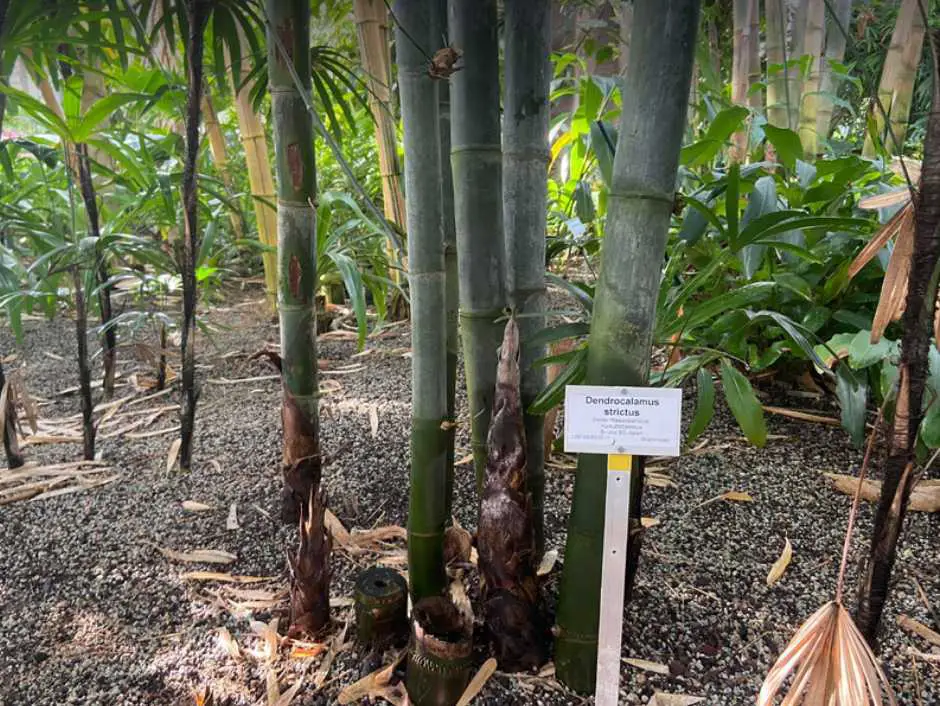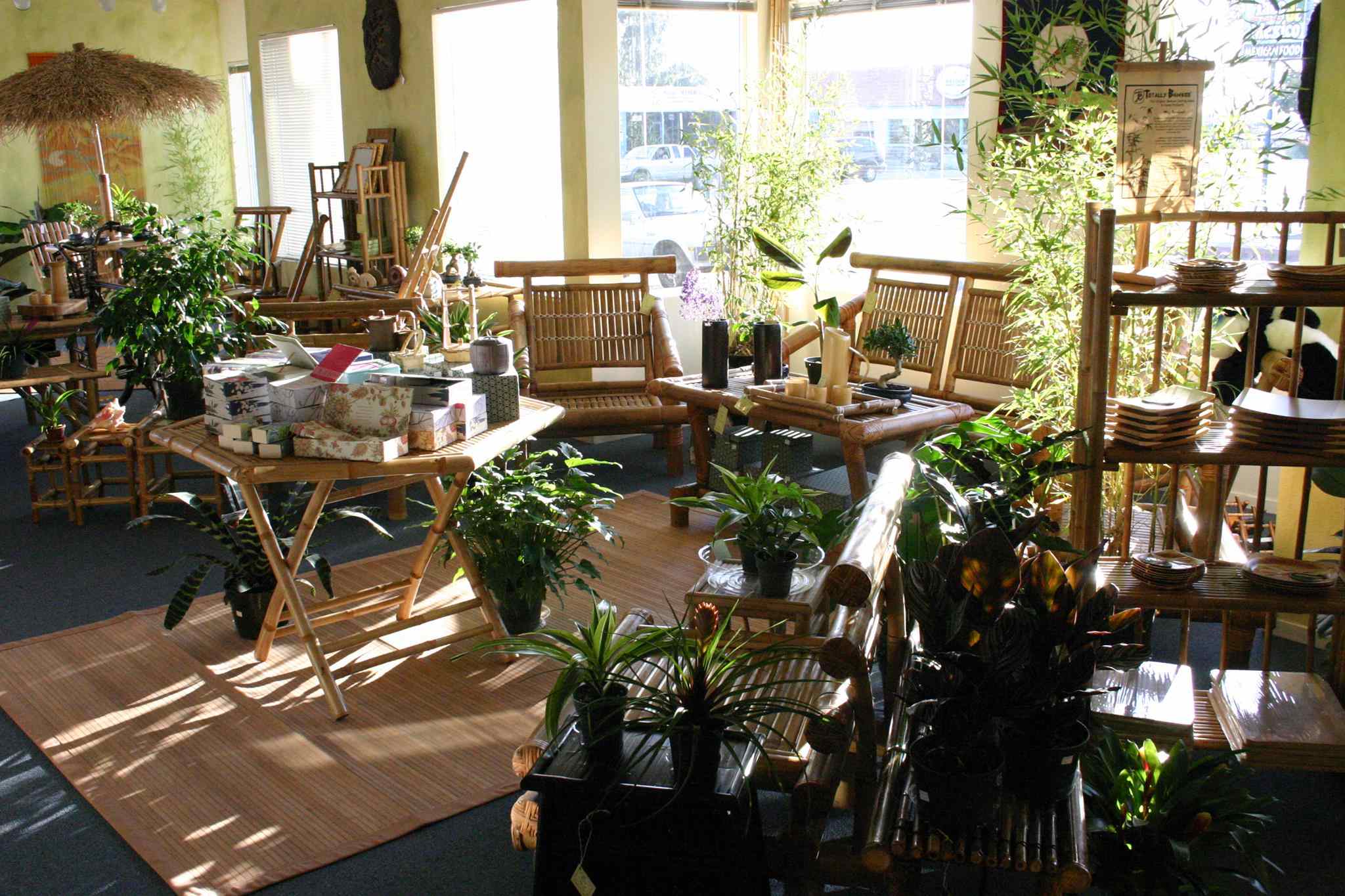Since Bambu Batu first opened in 2006, a lot of people have come in asking, “What’s a Batu?” Now we also call the shop the “House of Bamboo”, so a lot of people have guessed that Batu means House. And a lot of people try to spell it Bamboo Batu. I’m sorry to point it out, but I’m afraid they’re both wrong.
NOTE: This article first appeared in December 2018, most recently updated in August 2024.
What’s the meaning of Bambu Batu?
Bambu Batu is one of the vernacular nicknames for the bamboo species known as Dendrocalamus strictus. The term comes from Malay, an Indonesian language spoken by nearly 300 million people. In English, the species is more commonly referred to as Male Bamboo, Solid Bamboo, or Calcutta Bamboo. The plant is native to Northeast India and Southeast Asia, and it’s one of a handful of tropical varieties referred to as Iron Bamboo, having solid or nearly solid culms.
In Malay, the word Batu by itself means rock. So the literal translation of the name would be something like Rock Bamboo or Stony Bamboo. The fact is, this particular variety of bamboo is extremely hard and resilient to cracking. And oftentimes, the culms are solid, or very nearly solid, rather than being completely hollow like most types of bamboo that we are familiar with.
For all of these reasons, Dendrocalamus strictus is a top choice as a construction material and for building furniture. It also seems like a solid foundation on which to build a business. “And upon this rock, I build my house.” Finally, the name Bambu Batu just rolls off the tongue so nicely. It’s pretty much impossible to say it without cracking a smile. Go ahead, try it!
Dendrocalamus strictus
What else do we know about this exotic variety of bamboo that’s so much fun to pronounce?
Growing to heights of 60 feet or more, with canes up to 5″ in diameter, Bambu Batu is a giant clumping species. This massive, tropical timber bamboo is native to Southeast Asia and Northeast India, which is where it earned the name Calcutta Bamboo. It’s also widespread in Indonesia, and today farmers cultivate D. strictus throughout the tropical world, in regions as far-flung as Madagascar, Central America, Brazil and Cuba.
Young shoots are powdery bluish in color, but gradually turn green and then dark yellow or brown as they mature. Because of its formidable girth and unusually thick culm walls, this bamboo is considered a supreme variety for all manner of building, including light crafts, furniture and heavy construction. The high biomass content also makes it a common feedstock for pulp and paper-making.
Pros and cons of growing D. strictus
For a short time, it was a dream of mine to grow some Bambu Batu in my backyard. While many varieties of bamboo grow commonly throughout California and are widely available in nurseries, Dendrocalamus strictus remains pretty difficult to come by, even from large online bamboo dealers.
I suppose it would be different if I lived in Vietnam or maybe Colombia, but California is not the right climate for this species. Like all species of Dendrocalamus, this bamboo is native to the tropics, and that’s really where it belongs.
Furthermore, despite its impressive size, and the fact that it’s a clumper rather than a runner, Bambu Batu just doesn’t seem to be the most desirable ornamental strain. This massive bamboo is not nearly as attractive as some other timber varieties, like Bambusa oldhamii or Phyllostachys bambusoides, for example.
Two important criteria to consider when assessing the beauty of a bamboo species are the shape and color of its culms. Yes, D. strictus is a giant bamboo, and that can be very desirable. But other characteristics make it less desirable. Rather than smooth, elegant canes with a bright golden hue or eye-catching stripes, Bambu Batu culms are thick and thorny with a web of interlacing, lateral branches that make the grove impenetrable. Moreover, the fat stems have a dark green — and what you might even describe as a dirty brown — coloration.
An interesting species for a bamboo connoisseur’s collection, but this is not exactly a prize-winning specimen for the well-groomed garden.

Ornamental Dendrocalamus
This genus of tropical bamboo was never really meant to grow in the continental US, but you can get away with it in a place like San Diego or South Florida. Farmers around Tampa Bay and southward have recently taken to growing Dendrocalamus apser commercially. But the verdict is still out on whether that’s such a great idea. This tropical timber bamboo will certainly survive in that climate, but whether it grows well enough to make it a competitive cash crop is another question.
For ornamental purposes, D. giganteus is a more popular choice, with its smooth culms of deep, luscious greens. The lower few meters of the plant don’t produce any branches, so you can really admire the elegance of the poles. And further up, the foliage is resplendent with generously sized leaves.
Among collectors, D. minor is especially revered. At 20 or 30 feet in height, it’s one of the smaller varieties of this genus. So it has a modest footprint and doesn’t look so out of place in a residential garden. But it still makes a bold statement. And in terms of climate, it’s one of the most cold-hardy. It still doesn’t like temperatures much below 30º F, but it can withstand them without seriously slowing down its vigorous growth rate. Another advantage of this species is how quickly it fills out.

Conclusions
Despite the affinity I feel for Bambu Batu, and the tremendous joy I get from uttering its name, I realized it just wasn’t the best choice for my landscaping. It requires a tropical climate that I cannot provide, and produces a dense thicket I can’t fully appreciate. So in the end, I put the idea to rest. And instead, I settled for several other species that were much happier to be growing on California’s Central Coast.
If you’re trying to pick out some bamboo for yourself, check out this great article on selecting the Best Bamboo Varieties for your garden. You might also enjoy our in-depth article on Buddha Belly Bamboo, one of the most popular varieties of ornamental bamboo. We even have one about the Best Bamboo varieties for construction.
Finally, if you’re planning to build a House of Bamboo, the Bambu Batu might be your best bet. But if you’re looking to plant a garden, you might want to think twice. And if you’re not in Indonesia, just remember to ask for it by name, Dendrocalamus strictus.

Learn more
If you’re fascinated by the wonderful world of bamboo, please peruse our library of deep and detailed articles about bamboo botany and cultivation.
- Where does bamboo come from?
- 7 Tips for growing healthy bamboo
- How to choose the best bamboo for your garden
- Watering your bamboo
- Fertilizing your bamboo
- Growing bamboo for erosion control
Featured Image: Bambu Batu, 1023 Broad Street, San Luis Obispo, California (closed in spring 2020 due to COVID-19)

























